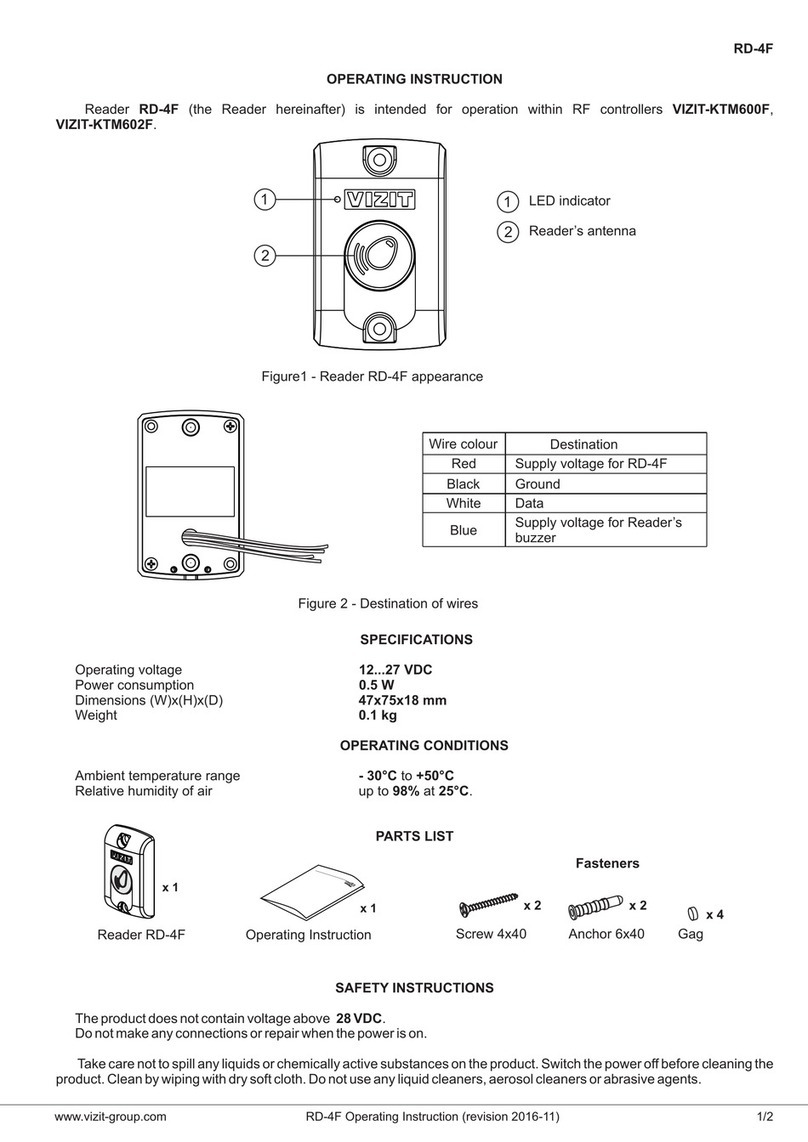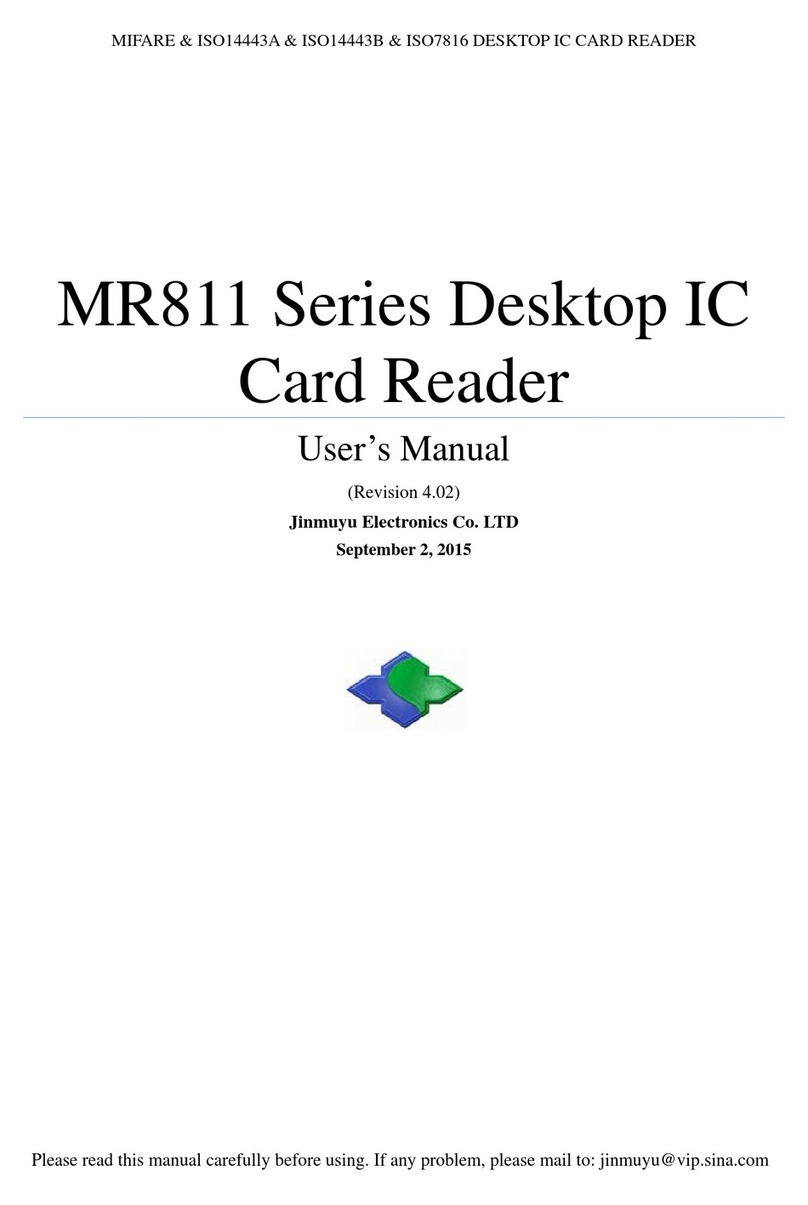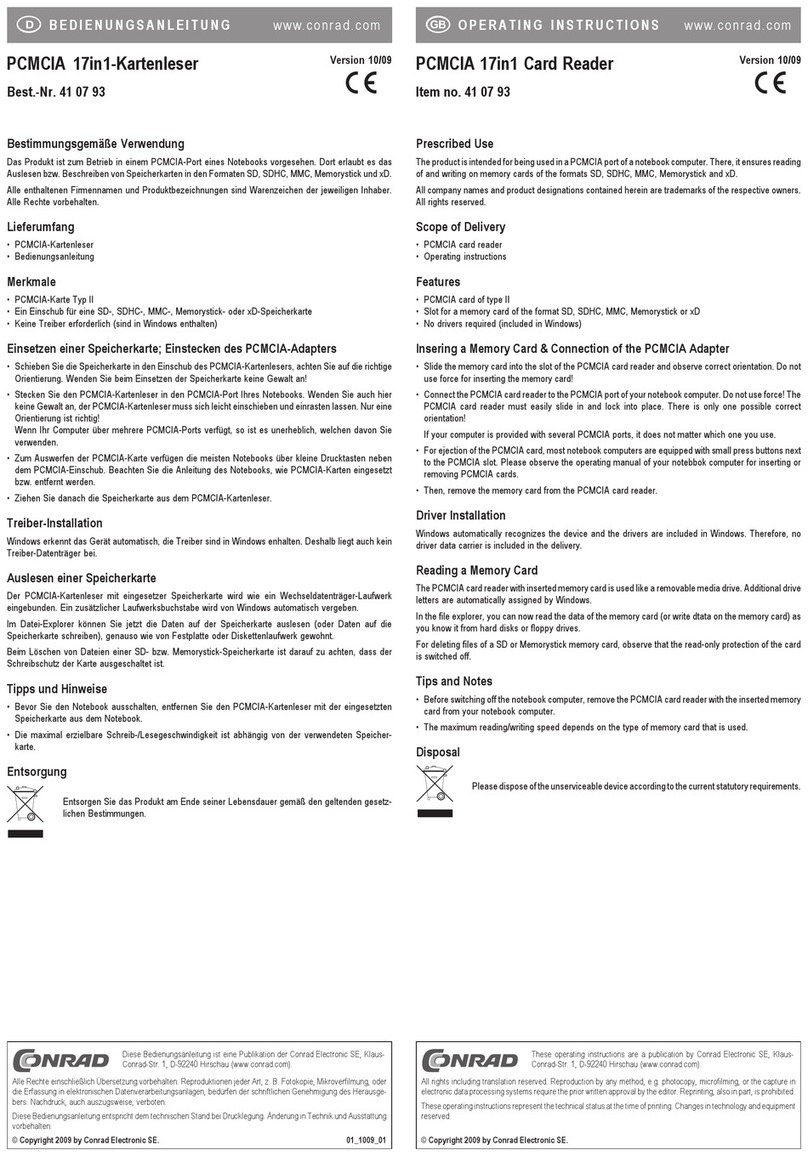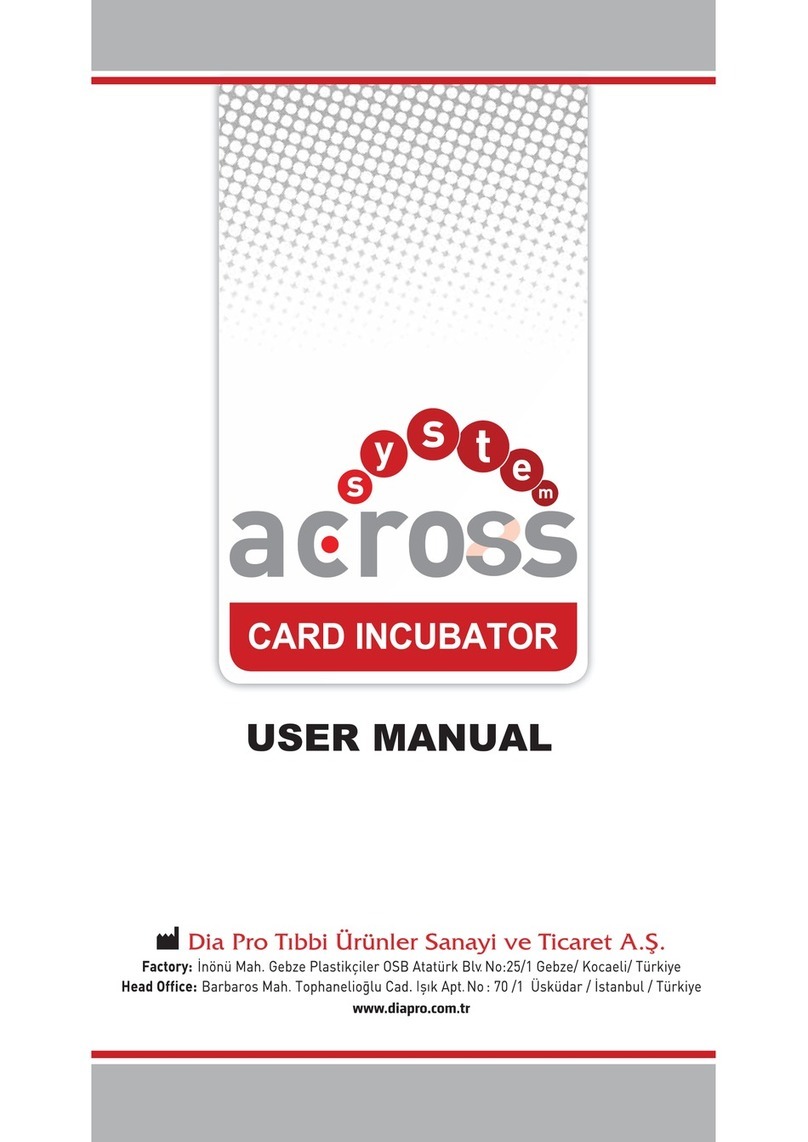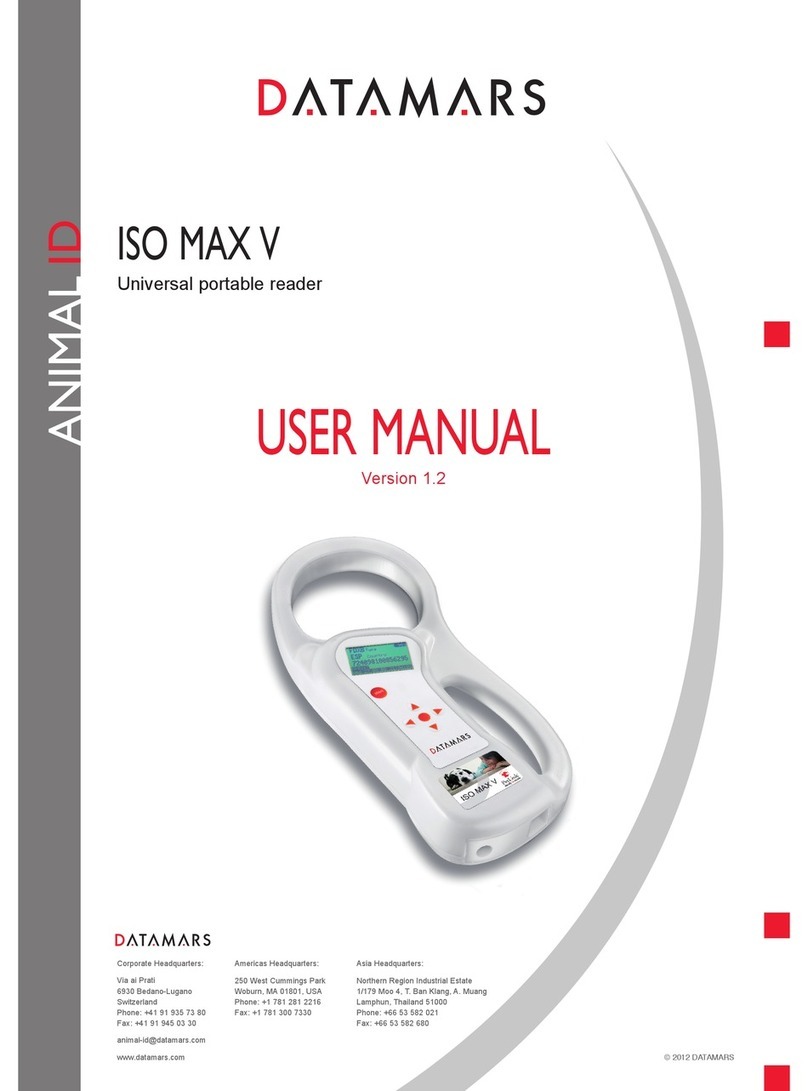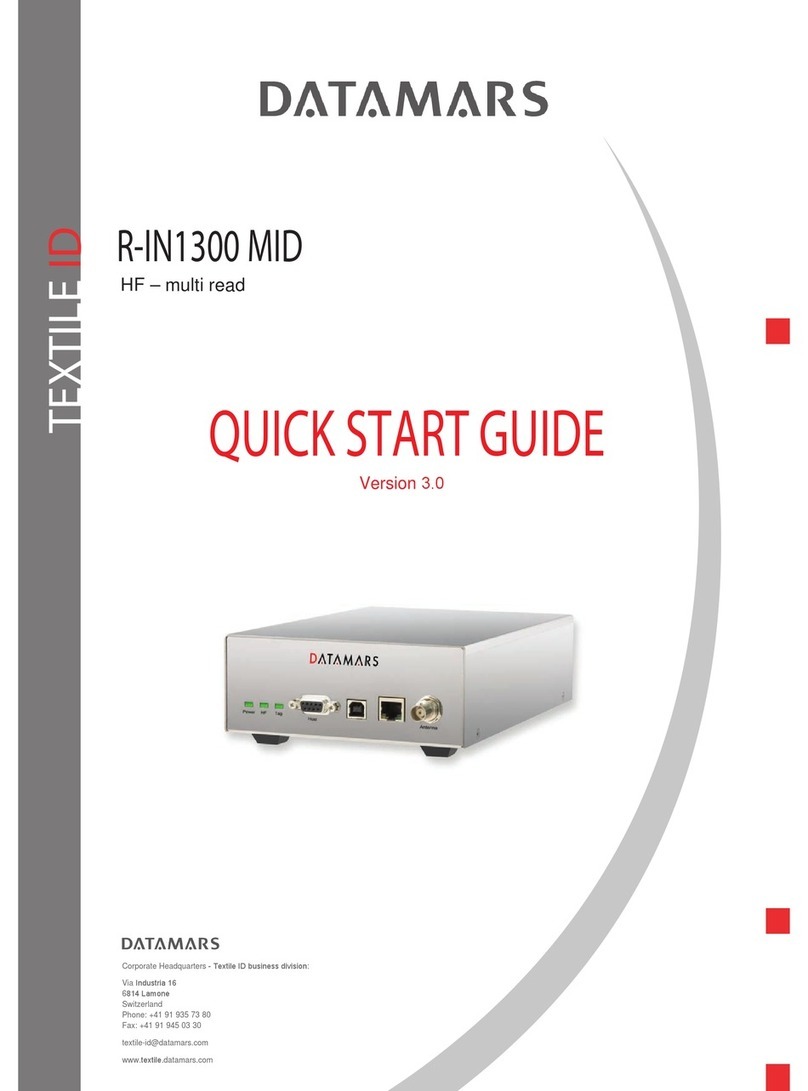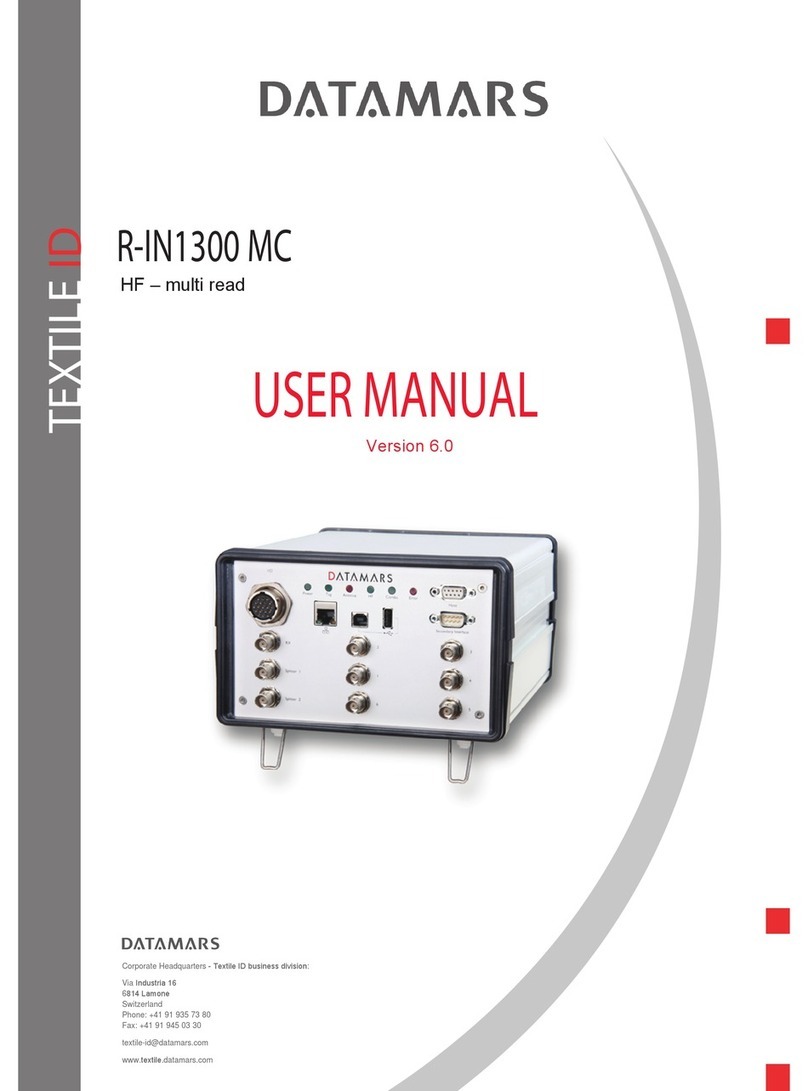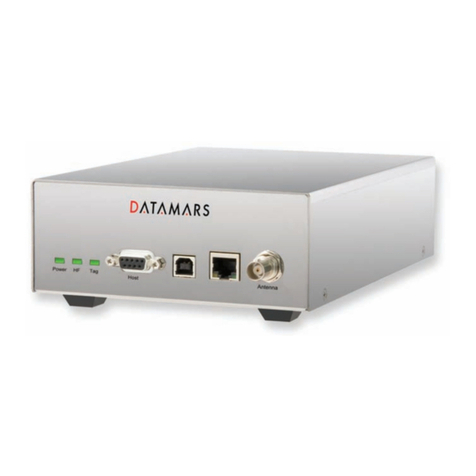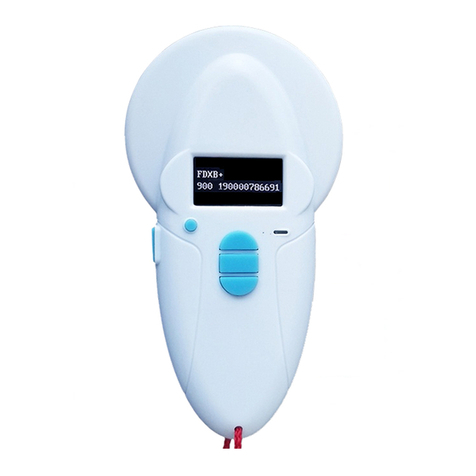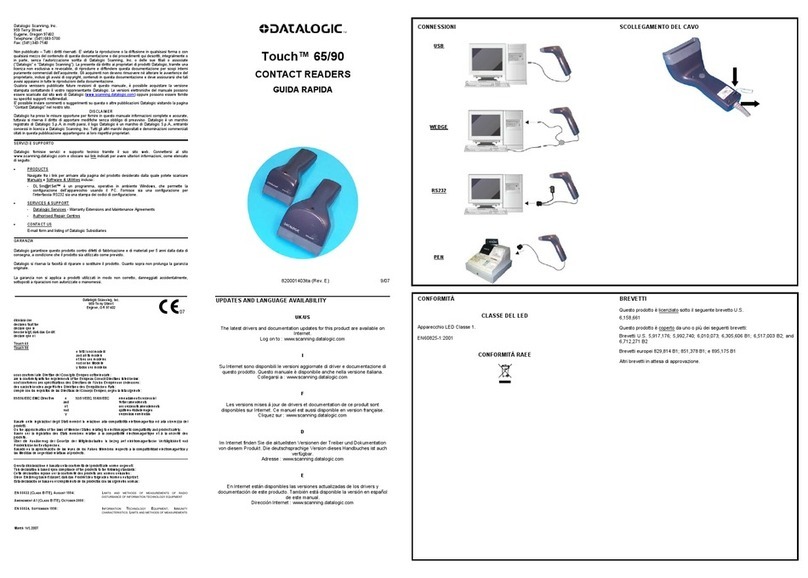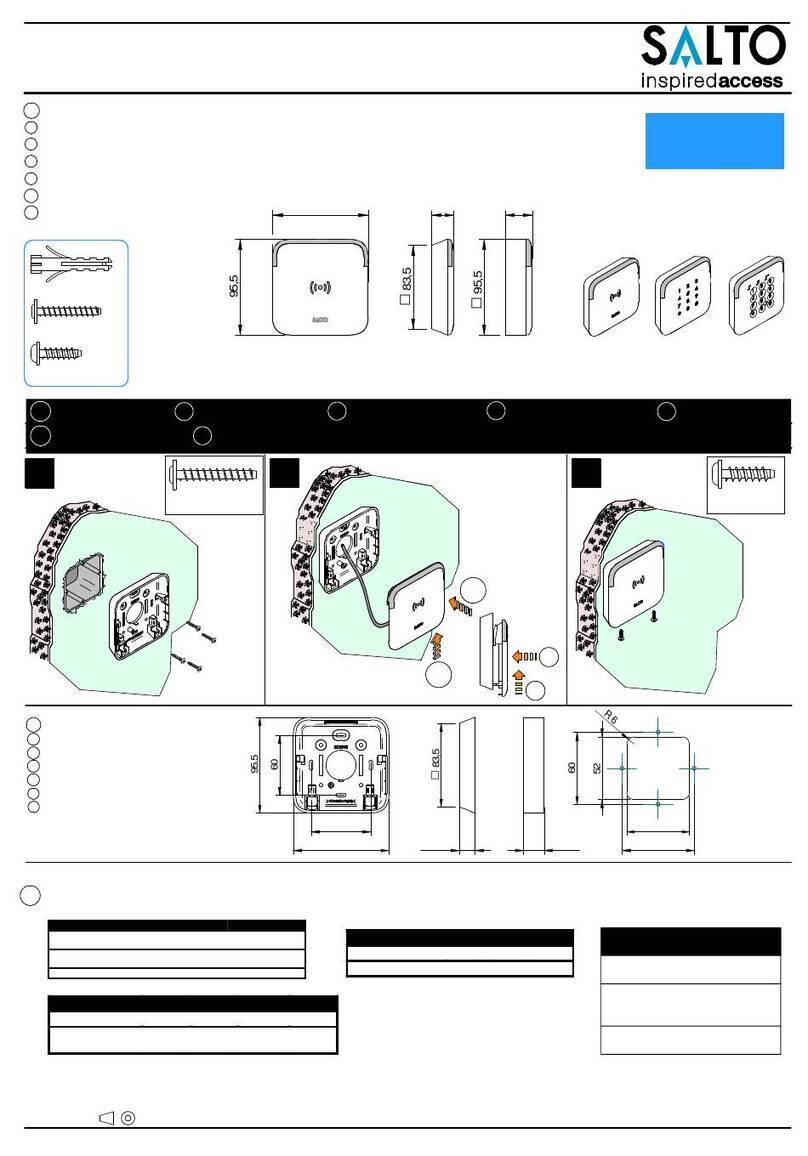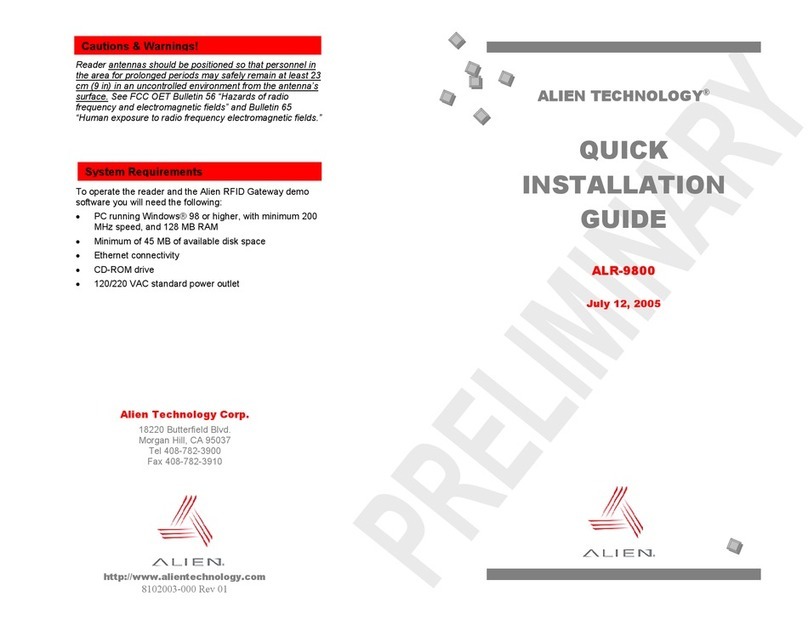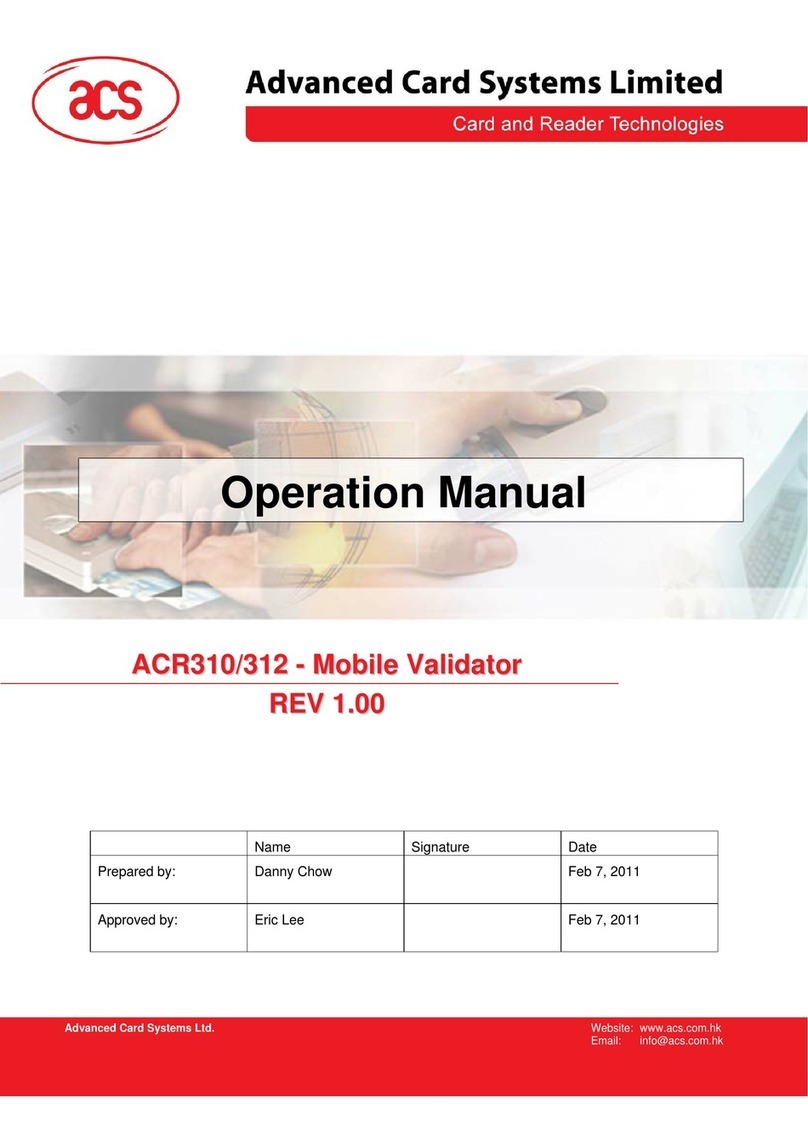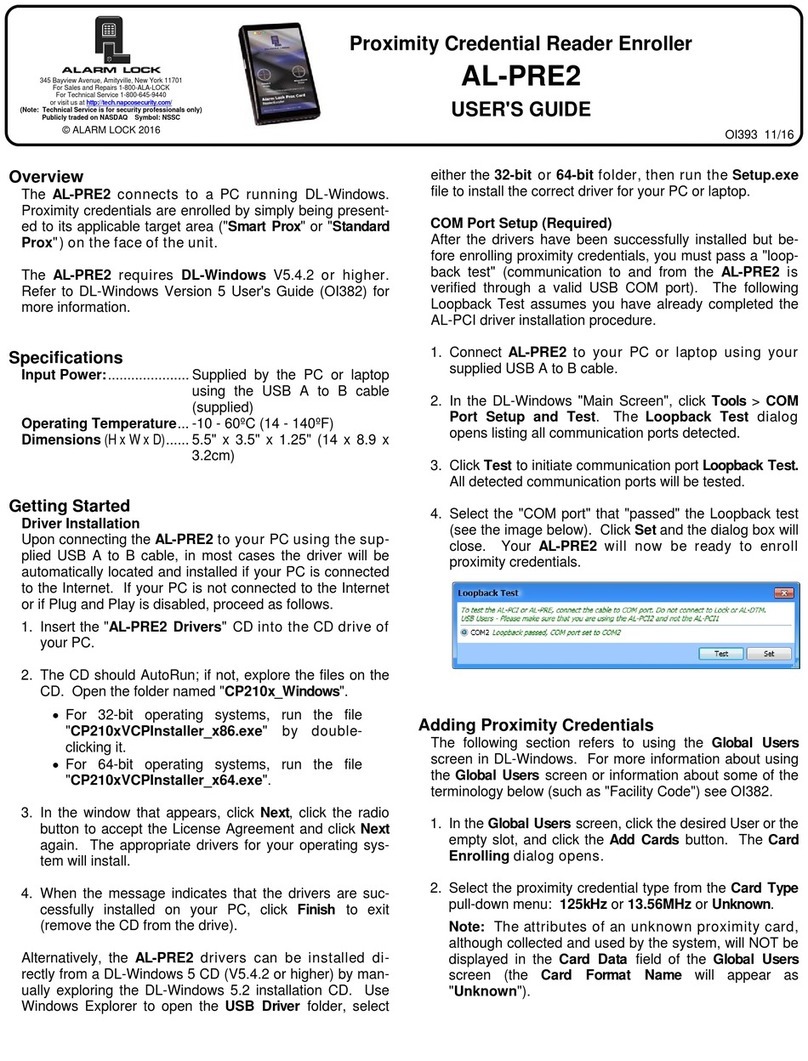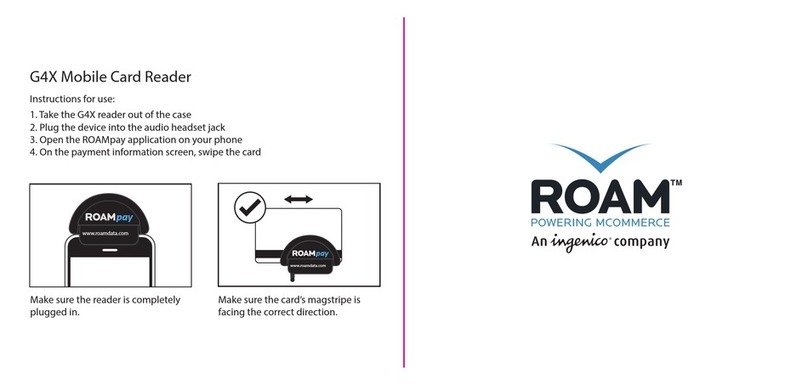DATAMARS
R-IN 1300 MID User Manual – Rev 3.0
1 (40)
TABLE OF CONTENTS
1Introduction................................................................................................................................2
2Hardware connections ..............................................................................................................4
3Operation with Terminal............................................................................................................6
3.1 List of the commands of the reader ...................................................................................6
3.2 Generic Settings ................................................................................................................6
3.3 ISO 15693 settings ............................................................................................................8
3.4 I-Code I settings...............................................................................................................10
3.5 USB Settings....................................................................................................................10
4Operation with Graphical User Interface (GUI).......................................................................12
4.1 Connecting with the COM (RS-232) ................................................................................13
4.2 Connecting with Ethernet (Recommended) ....................................................................12
4.3 General Considerations ...................................................................................................13
4.3.1 Third Party Interface..............................................................................................13
4.3.2 Human Interface....................................................................................................13
4.4 Login ................................................................................................................................14
4.5 Logout (Web Server version only) ...................................................................................16
4.6 Network Setup .................................................................................................................16
4.7 RS 232 Setup...................................................................................................................17
4.8 Reader Setup...................................................................................................................18
4.9 Advanced Reader Setup..................................................................................................19
4.10 Inventory Setup ............................................................................................................19
4.11 Monitor..........................................................................................................................20
4.12 Configurations ..............................................................................................................21
4.13 Firmware Update..........................................................................................................21
4.14 USB Setup....................................................................................................................22
4.15 Tuning...........................................................................................................................23
4.16 System Requirements.................................................................................................23
5USB Usage..............................................................................................................................24
5.1 USB Serial Emulation ......................................................................................................24
5.1.1 First usage.............................................................................................................24
5.1.2 Further usage ........................................................................................................25
5.1.3 How to discover which COM-Port corresponds to the USB-Serial-Emulation......26
5.2 USB Mass Storage Emulation (MID Plus Only) ..............................................................28
6Tuning .....................................................................................................................................30
7 Technical Specifications for R-IN1300 MID ............................................................................32
7.1 Operational characteristics ..............................................................................................32
7.2 Electrical characteristics ..................................................................................................32
7.3 Regulations ......................................................................................................................33
7.3.1 Equipment Modification .........................................................................................33
7.3.2 EN 300330-1/-2 (Europe) ......................................................................................33
7.3.3 FCC (USA).............................................................................................................33
7.3.4 IC (Canada) ...........................................................................................................34
7.3.5 CE certification ......................................................................................................34
7.3.6 Warranty ................................................................................................................34
Appendix A – Connecting the R-IN1300 MID to a PC with a cross cable....................................35
Appendix B - Code length.............................................................................................................37
Appendix C - Troubleshooting ......................................................................................................38
ADDENDUM – 24V DC Version of MID-Range Reader................................................................39
